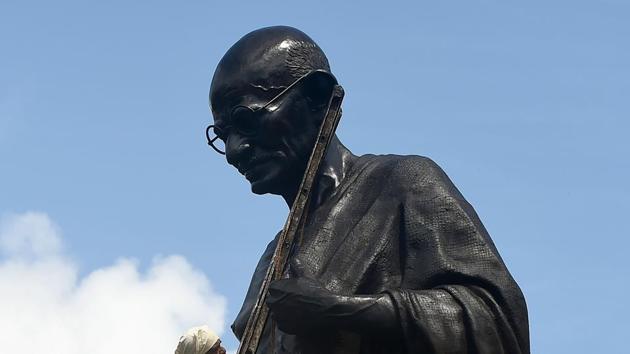Mumbai, where Gandhi is relegated to the tourist map
I have hardly ever seen people at Gandhi’s statue opposite the Sachivalaya barracks
Gandhi Jayanti (his birth anniversary) comes and goes every year with state authorities, educational institutions and society at large showing perfunctory interest – almost as if this was a ritual that had to be performed, and welcomed more as a national holiday than anything else.

Interest in Gandhi showed a spike (in India) circa 2006, when Raju Hirani’s Lage Raho Munna Bhai, featuring Gandhi as the conscience-keeper of the hero, swept the box office. The `Gandhigiri’ portrayed in Lage Raho was, however, more at the personal and social than political level.
In the days leading up to his birth anniversary this year (October 2), articles, shows, discussions, and debates about Gandhi have been profuse, not just in India, but also globally. He has been spoken or written about by the most informed, influential and powerful.
What makes Gandhi so newsworthy this time?
There is obviously the milestone associated with this birthday. The media is always seeking a good peg for a story and for the remarkable life he led, it can’t get better and bigger than Gandhi@150.
But there is probably another reason why Gandhi has found strong global resonance this time as muscular politics, even in democracies, is changing the world order.
Jostling for global political and economic supremacy as it unravels – and before it settles into a fresh power matrix – is accompanied by a lot of strife and uncertainty. Juxtaposed in this frame of reference, Gandhism – with all its flaws and shortcomings – somehow comes across as a balm.
Multiple aspects define Gandhism in which non-violence and social amity – among castes, religions, and races – stand paramount. In my opinion, these have sadly not been highlighted as much as they should have been.
However, there has been an avalanche of stories and articles about Gandhi in the past few weeks that I have neither the expertise nor desire to supplement. Instead, I’ll move laterally and deploy him to highlight the meagre interest and understanding we sadly show in our history.
For instance, I have hardly ever seen people at Gandhi’s statue opposite the Sachivalaya barracks. A few decades back, there would be a fair number of visitors; now they are hardly ever more than a handful – and that on holidays. Some months back I took a stroll around the place and the only people who had come to see the forlorn statue were some Japanese tourists. They were without guides, having searched the spot on the Internet.
Mani Bhavan at Gamdevi, where Gandhi spent a lot of time, has far more visitors, yet not enough befitting the Father of the Nation, despite the treasure trove of material on display. I wonder whether Mani Bhawan is still part of educational field trips, as it was during the 1960s and 70s when I was schooling. I’ve mentioned this earlier in this space but bears repetition. A stone’s throw from Mani Bhavan is August Kranti Maidan, from where Gandhi gave the clarion call for the British to ‘Quit India’ on August 8, 1942. Five years later, India was to become free. A smallish ground, August Kranti Maidan is also the venue where various political parties descended between 1975 and 1977, to protest against the Emergency. In many ways, the fate of modern Indian politics was shaped here.
Adjoining August Kranti Maidan is Sheth Gokuldas Tejpal Road. In the Tejpal Sanskrit Boarding School on this road, the Indian National Congress came into existence on December 28, 1885. It is bewildering that the Congress has failed to exploit the opportunity to regroup using the history behind this road. In this small area in south Mumbai, less than perhaps one square kilometre, there exists so much story and drama of how India’s politics has evolved. But because of political and public apathy, it is hardly known beyond academic circles. Mumbai has got stereotyped as a city devoted to business, and home to Hindi cinema and cricket, but diffident to politics when history shows how major movements that shaped out destiny started her. It would appear that political and public consciousness has lapsed.
Such is the pity.
Stay updated with all the Breaking News and Latest News from Mumbai. Click here for comprehensive coverage of top Cities including Bengaluru, Delhi, Hyderabad, and more across India along with Stay informed on the latest happenings in World News.
Stay updated with all the Breaking News and Latest News from Mumbai. Click here for comprehensive coverage of top Cities including Bengaluru, Delhi, Hyderabad, and more across India along with Stay informed on the latest happenings in World News.






